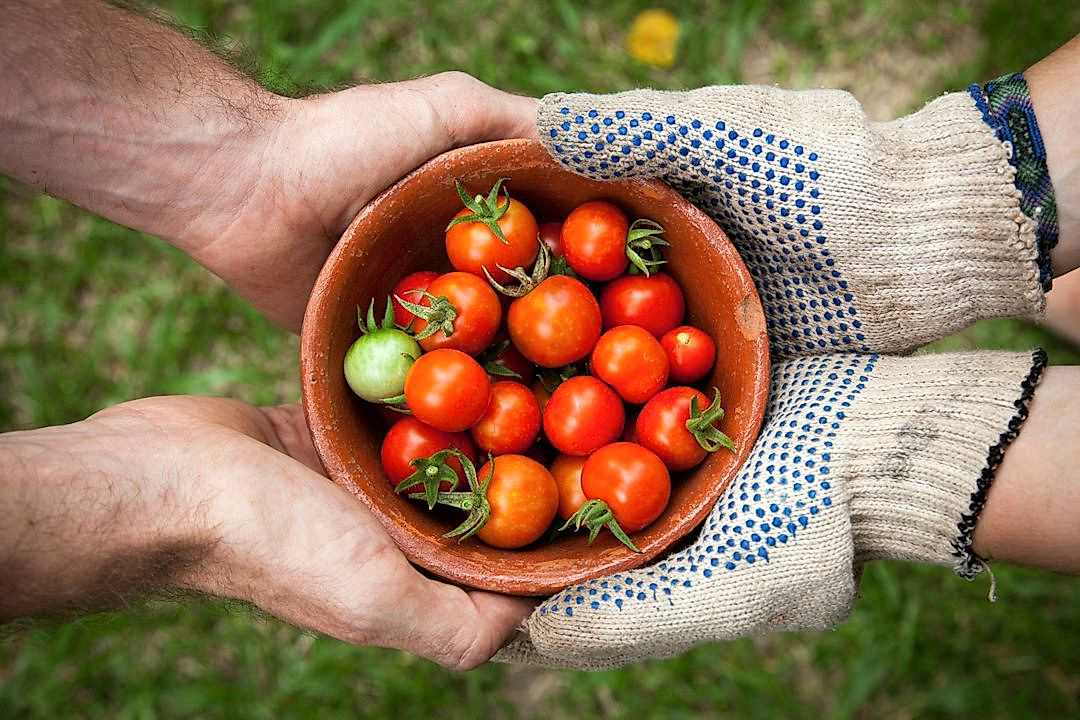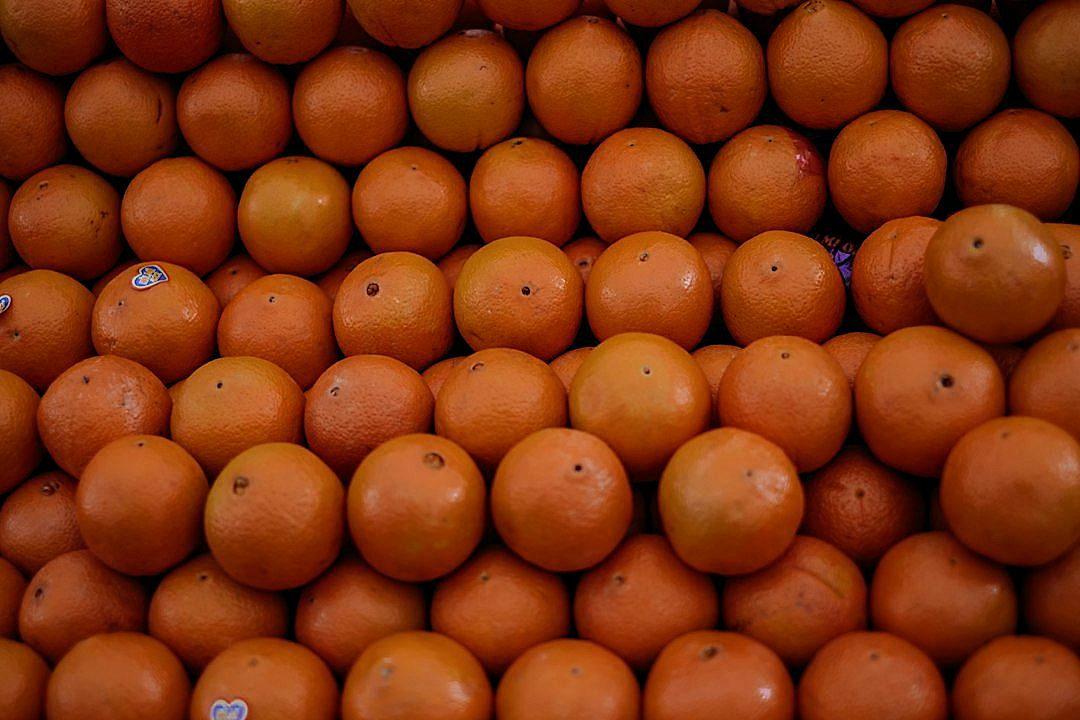The global retail landscape is changing rapidly and merchants are exploring multiple avenues to streamline their operations and thrive.
One critical facet to consider in the mix is diversification of produce sources.
It’s not just about having a variety of fruits, vegetables, and other produce on the shelves, but also about where they come from.
Having a diverse range of suppliers can prove beneficial in numerous ways, from ensuring continuity of supply to enhancing product range.
It also opens up opportunities for attracting a broader customer base.
This article will provide valuable tips for retailers seeking to expand and diversify their produce sources.
Tips For Diversifying Produce Sources In Retail
1. Explore local farmers markets and co-ops.
When seeking to diversify your produce sources, one of the first places to consider are local farmers markets and co-ops.
The success of any retail business is often dependent on its ability to provide a diverse range of high-quality products, and the same can be said for those in the grocery sector.
Local farmers markets are an excellent resource for finding fresh, seasonal produce and can offer the variety needed to attract a broad customer base.
Not only do these markets showcase the bounty of your local region, but they also provide opportunities to connect directly with farmers and learn more about the sourcing and production of the goods on offer.
Beyond the potential for differing produce, sourcing from farmers markets also contributes back to your local economy and supports small, independent growers.
Similarly, cooperative grocers or co-ops present another avenue for sourcing diverse produce.
Cutting out the middleman, co-ops operate by bringing together a collective of growers and retailers that work together to share resources and distribute food.
While each co-op will operate a little differently, broadly speaking, you can expect to find a greater emphasis on locally sourced and organic products, expanding the diversity of your offering.
Furthermore, many co-ops also offer bulk purchasing which can be a cost-saving move for retailers, particularly if you are looking for large quantities of a given product.
An additional advantage of sourcing from co-ops is the ethos of the cooperative system itself.
By choosing to source through these channels, businesses can align themselves with values such as biodiversity, sustainability, and fair trade practices.
However, seeking out local farmers markets and co-ops doesn’t simply equate to diversification in terms of product range.
It also represents a diversification and strengthening of your supply chain.
By cultivating relationships with multiple suppliers, retailers can better equip themselves to weather any supply chain disruptions and ensure a consistent supply of diverse produce for their customers.
The operational and reputational benefits of sourcing locally from farmers markets and co-ops cannot be overstated.
While it may require a bit more effort and planning on the front end, the payoff in terms of providing a diverse and engaging consumer experience is well worth the investment.
2. Source imported fruits and vegetables
To diversify produce sources at a retail level, Sourcing imported fruits and vegetables presents a valuable strategy.
Products harvested in various regions offer unique flavours and nutritional compositions that can attract a more diverse customer base.
By expanding to imported produce, retailers can provide a broader range of options to their consumers.
Sourcing imported produce also allows for year-round availability of seasonal crops from different regions.
For instance, tropical fruits that are not native to one’s country can be sourced from warmer regions.
This offers shoppers the luxury of enjoying off-season fruits and vegetables anytime.
Importantly, this strategy requires forming partnerships with reliable suppliers abroad to ensure consistent quality and delivery.
You must do ample research when choosing your foreign suppliers, checking their reliability, their agricultural methods, and their capacity to deliver.
It’s crucial to analyze the export and import regulations, tariffs, and any potential trade barriers that could impact the viability and cost-effectiveness of importing produce.
Challenges such as language barriers, time differences, and varying business customs may exist while dealing with suppliers internationally.
Moreover, careful consideration of the environmental impact of importing food, including the carbon footprint of shipping, is significant.
Going the extra mile to source from suppliers who prioritize sustainable shipping and farming practices can increase overall sustainability in your business operations.
Consideration to the freshness and overall quality of these items is also pivotal, as long shipping times might degrade the quality of the produce.
Proper storage and packing are essential in maintaining the freshness and safety of the imported goods.
In essence, while sourcing imported fruits and vegetables can broaden the variety and availability of products being offered, it’s a method that requires careful planning, thorough research, and environmental mindfulness.
But done right, it can be one of the significant steps in diversifying the sourcing of produce in the retail sector.
3. Investigate Community-Supported Agriculture (CSA)
Community-Supported Agriculture, commonly referred to as CSA, can potentially be a valuable source of diverse produce.
Conceptually, a CSA operates by pulling together a community of individuals who pledge support to a local farm operation.
This allows the farmers to plan for a more reliable demand for produce, eliminating the risk of unsold goods.
The CSA members, in return, receive fresh, seasonal, and often organic produce directly from their local farmers on a regular basis.
The variety of crops grown by CSA farmers often vastly outnumber those offered by conventional mass-scale agricultural operations.
This is a great way to diversify your produce sources, and it often means offering a wider variety of fruits and vegetables to your retail customers.
Investigating different CSA groups in your local area, and potentially forming partnerships with them can be a profitable way to diversify your produce sources.
However, working with CSAs comes with its own set of considerations and implications.
Firstly, the produce availability will be season-dependent, meaning the variety of produce will vary throughout the year.
This can be a great selling point for customers who value seasonality, but it might require constant adjustment of inventory for the retail outlet.
Secondly, CSA products often come with a higher price tag due to the organic and sustainable practices implemented by the farmers.
This means that the retail outlet might need to adjust its pricing strategy and customer targeting to accommodate this change.
In addition, the pricing for CSA products is often higher due to the higher quality and freshness of products, a direct result of the short supply chain.
Lastly, working closely with CSA often means adopting a more active role in communicating with farmers and navigating delivery logistics.
This might require more resources initially but can pay off in the long run with a stable supply of diverse, fresh, and high-quality produce.
Thus, investigating opportunities in Community-Supported Agriculture is a unique and promising way to diversify your produce sourcing strategy.
4. Develop relationships with organic producers.
As a retailer sincerely looking to diversify your produce sources, a significant stride to take would be to establish and sustain relationships with organic producers.
These producers encompass a wide range of entities spanning from small family farms to large-scale organic operations.
Most organic farmers are fervent advocates of environmental sustainability, and forming a partnership with them does not only boost your produce variety but also portrays your establishment as an eco-conscious one.
Bridging the gap between consumers and organic producers can foster healthier eating habits as it encourages the consumption of fresh, pesticide-free produce.
Exploring collaborations with organic producers necessitates a comprehensive understanding of the significant role they play in the agricultural industry.
They employ ecologically friendly farming practices that avoid the use of synthetic pesticides and genetically modified organisms, creating a healthier product for consumers.
This is undoubtedly one of many reasons enamoring consumers to organic products and ergo, a wisely chosen partnership can elevate your sales and customer satisfaction.
Paying visits to organic farms and attending organic farming conferences can enhance your knowledge about organic produce, and subsequently, boost the authenticity and credibility of your retail store.
This will not serve only as a way to assess the quality of produce but also to establish mutual trust and respect with the organic producers.
The power of building strong relationships with organic producers has a tremendous influence on the quality of your retail store’s inventory and the satisfaction of your customers.
Therefore, fostering these relationships should not be an afterthought but a priority for retail stores looking to diversify their produce sources.
Understanding that these benefits are a two-way street can spur on more integrated and impactful collaborations.
Organic producers gain from these relationships by having consistent markets for their produce, and in turn, retailers gain by having a regular supply of healthy, quality organic produce.
Overall, it’s clear that alliances with organic producers can contribute considerably to the diversification of produce sources in retail and the enhancement of the shop’s profitability, sustainability, and customer satisfaction.
So, it behooves every retail store owner or manager to genuinely invest time, resources, and energy into building these profitable and progressive partnerships.
5. Provide seasonal produce variety
Seasonality is a crucial factor when considering diversifying produce sources in a retail context.
The desire of shoppers for a more diverse and locally-sourced range of fruits and vegetables increases the importance of providing a seasonal variety of produce.
Providing a variety in your product offering allows customers greater choice, leading to overall customer satisfaction.
Focusing on seasonal produce not only promotes sustainability in farming practices, but it’s also more cost-effective due to the higher yield of in-season produce.
Fruits and vegetables tend to have optimum flavor and nutritional value when they are in-season.
By offering seasonal produce, retailers can meet growing consumer demand for fresh, locally sourced, and high-quality products.
Offering an array of seasonal produce also allows retailers to introduce their customers to a wider selection of fruits and vegetables, some of which they may be unfamiliar with.
This strategy could inspire repeat business as customers can look forward to new and varying produce items during their subsequent shopping trips.
It’s also worth noting that many shoppers are interested in learning about where their food comes from and the process involved in bringing it from the farm to the retail shelf.
A retail store that provides a varied assortment of seasonal produce can utilize this opportunity to educate consumers about their produce sourcing and their commitment to local farmers and sustainable practices.
The buying experience can also be enhanced by providing recipes and cooking suggestions for lesser-known seasonal fruits and vegetables.
One key advantage of prioritizing seasonal produce is the ability to leverage competitive pricing.
Because fruits and vegetables are usually more abundant in their harvest season, retailers can often procure these goods at lower prices.
Fewer transportation and storage requirements for in-season produce could further help cut costs.
But diversifying produce sources and focusing on seasonality doesn’t come without its challenges.
Retailers need to be prepared to manage and mitigate the potential logistical hurdles associated with seasonality.
To succeed, retailers need to work closely with their supplier networks and have clear communication channels to ensure they are sourcing the freshest produce possible at the best prices.
6. Partner with Urban Farming Initiatives
Urban farming initiatives offer a valuable opportunity for diversifying produce sources. Understanding the benefits of partnering with these initiatives forms a foundation for sustainable relationships.
These initiatives often promote a stronger local economy by providing a reliable source of fresh and locally grown produce.
The close proximity of urban farms reduces transportation costs, offering more affordable and fresher produce to your retail store.
Urban farming initiatives bring forth a chance for retailers to draw in customers who wish to support local agriculture and consciously buy fresh, locally produced food.
Partnering with them also allows for more control over the supply chain.
Since you are directly working with urban farmers, you can manoeuver the often complicated logistics of commodity trading, having a direct line to your produce supply.
This partnership also ensures you get a consistent supply of fresh produce, thus averting any potential supply disruption.
Moreover, by engaging with urban farming initiatives, retailers give back to their community by supporting local talent and encouraging sustainable farming practices.
Taking an active role in supporting urban farming may also enhance the retailer’s image in the eyes of their consumers.
A partnership with urban farming initiatives directly corresponds to the growing consumer trend towards locally sourced, organic, and sustainable produce.
Urban farming initiatives typically prioritize organic and biodynamic farming practices, aligning with healthier and more eco-friendly consumer trends.
In turn, retailers could benefit by attracting a segment of consumers that are conscious about the provenance and sustainability of their food.
While urban farms are smaller in scale, they often grow a wider assortment of produce that could enrich the offerings of your store.
In conclusion, partnership with urban farming initiatives provides potential solutions for diversifying produce sources and staying relevant with consumer trends for local and sustainable food sources.
7. Consider Growing In-House Produce
One exciting avenue for diversifying produce sources within a retail setting is through growing in-house produce.
This concept positions the retailer not just as a middleman, but also as a product creator.
By taking control of the production process, businesses can directly dictate the variety and quality of their inventory.
Establishing an in-house growing operation can both enhance the quality of your inventory and give you an additional level of control over your supply chain.
This ensures a consistent source of produce, immune to external supply chain disruptions.
Furthermore, this can also enable retailers to offer special or exclusive produce varieties not commonly found in the market.
One way to kickstart your in-house production is by installing vertical farming systems or aquaponics setups.
These advanced growing methods can optimize space usage and could prove financially beneficial in the long run.
However, implementing in-house growing operations does pose its own set of challenges.
They necessitate substantial initial investment and require specialist knowledge and skills to manage successfully.
Despite these drawbacks, for businesses willing to invest the time and resources, in-house growing can be a game-changing move towards supply diversity.
Not only can it significantly reduce dependence on external suppliers, but it can also provide a unique selling point, adding value to the consumer experience.
Locally grown, freshly harvested produce can certainly draw sustainable-minded, health-conscious consumers to your retail business.
Hence, growing in-house produce is a meritorious venture to consider as part of a broader strategy for diversifying produce sources in retail.
The journey to establishing an in-house growth operation might be complex, but with a clear vision and committed investment, it can transform your retail operations and the potency of your product offerings.
The Bottom Line
Ultimately, accessing a diverse array of fresh, quality fruits and vegetables year-round requires leveraging a multi-faceted approach.
Exploring local farmer’s markets and co-ops allows for connections with regional growers and encourages support of local economies.
Sourcing imported varieties expands the selection, offering unique and exotic options.
Involvement in Community-Supported Agriculture fosters a direct link between consumers and producers, while developing relationships with organic producers ensures high-quality, chemical-free options.
Seasonal modifications to product offerings keep inventory fresh and engaging.
Partnerships with urban farming initiatives permit the support and utilization of cutting-edge agricultural practices, and lastly, considering in-house growth allows for the ultimate control in produce freshness and quality.
Through combination of these methods, businesses deliver an array of vibrant, fresh produce to their customers, while supporting and promoting sustainable agricultural practices.




